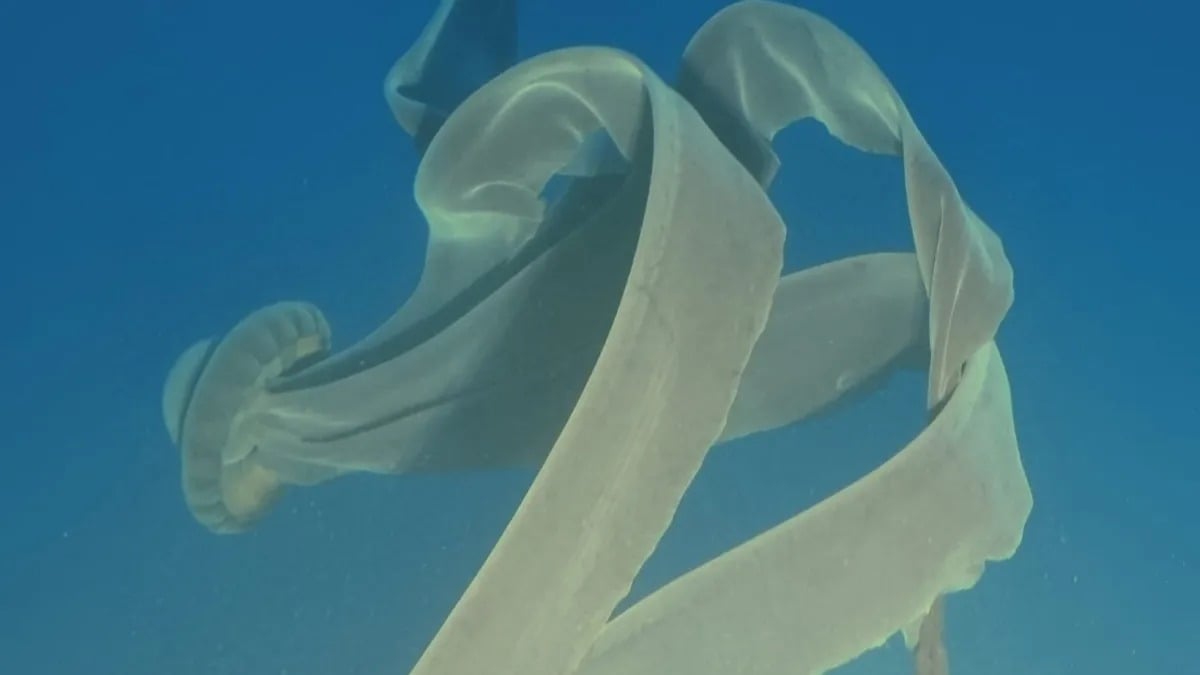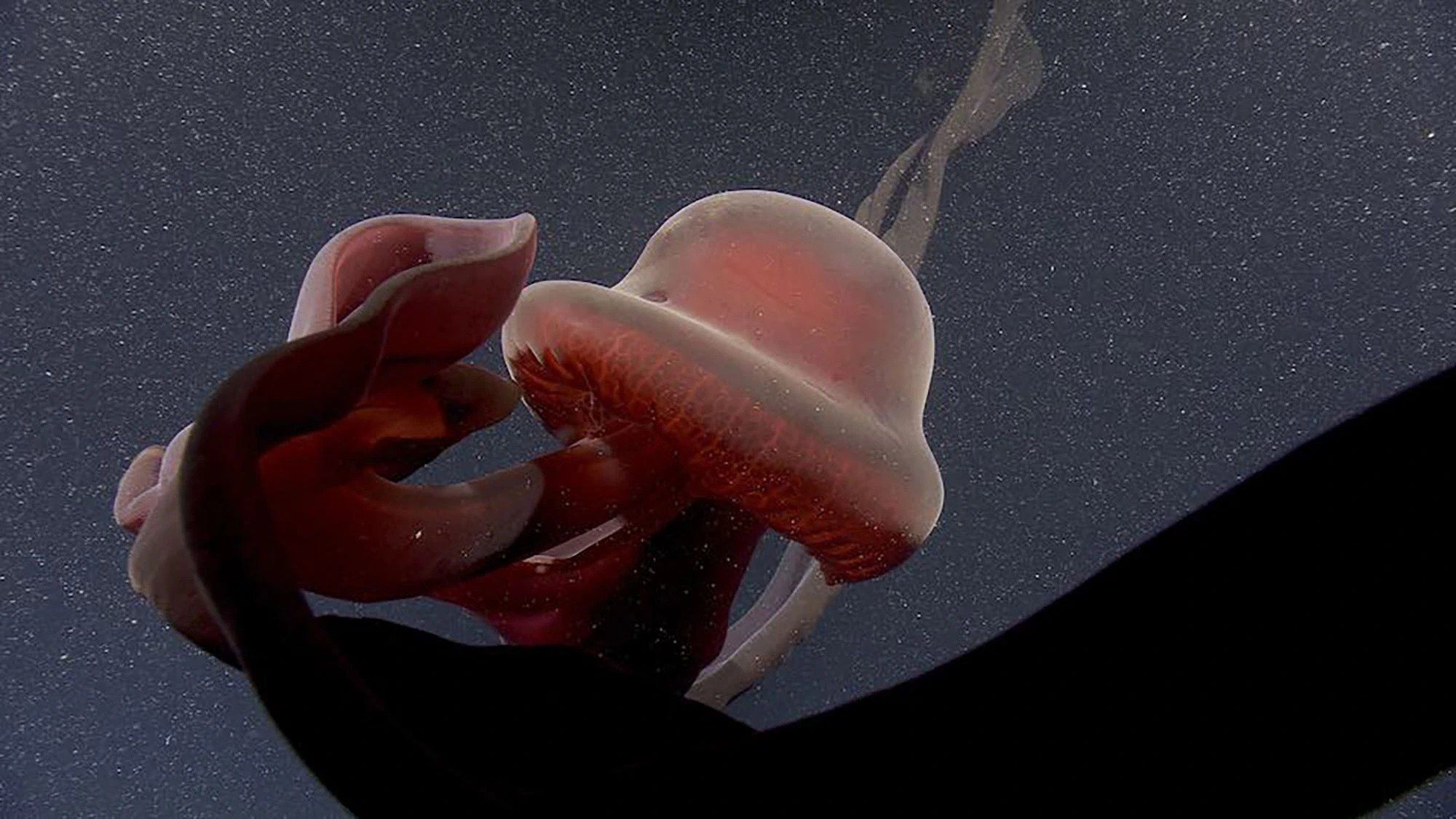
When passengers aboard a Viking Expedition cruise spotted a massive creature in the frigid waters off Antarctica, they suspected it was special. However, they did not realize they had stumbled upon the extremely rare, giant phantom jellyfish (Stygiomedusa gigantea). Until then, there had been only 126 recorded observations of the species since its identification in 1910.
The cruise guests were exploring the ocean in a mini submarine at about 262 ft (80 m) below sea level when they saw the creature. The deep-sea animals were spotted at least three more times in the following months. Researchers estimate all the jellyfish were over 16 feet (5 meters) long. One specimen stretched at least 33 feet (10 m) in length! The extraordinary encounters occurred from early 2022 to early 2023. They were revealed in a study published in the journal Polar Research on January 30, 2023.

The giant phantom jellyfish usually live 3,280 feet (1,000 m) below sea level. However, they have been known to swim closer to the surface around Antarctica. Dr. Daniel Moore, who led the study, is not sure of the reason. But he has a couple of theories. He speculates it may be to get exposure to ultraviolet radiation. This helps rid the jellyfish of parasites. The jellyfish may have also been carried upwards by the strong ocean currents.
Very little is known about the elusive deep-sea predators. Scientists believe they use their ribbon-like arms to capture plankton and small fish. The jellyfish are usually accompanied by a small fish called pelagic brotula. Researchers think the fish receive shelter and protection from the jellyfish. In return, they eat the parasites that cling to the jellyfish's body.

Dr. Moore hopes the regular sightings will allow scientists to gain more insights into the deep-sea animals. He says, "It is extraordinary that we know so little about such large marine creatures as the giant phantom jellyfish. However, now we have the means to make regular observations at greater depths than previously possible. This provides an exciting opportunity for discovery."
Resources: Livescience.com, Nationalgeographic.com, polarresearch.net